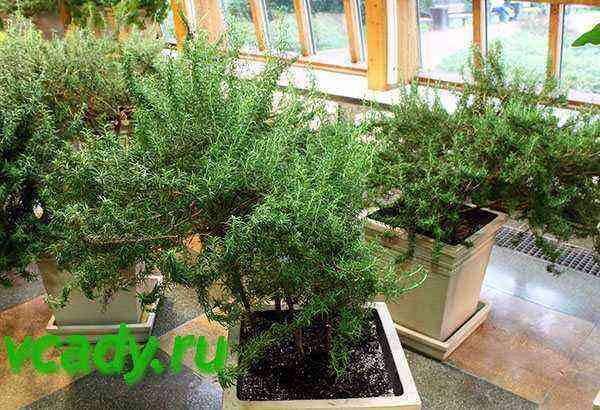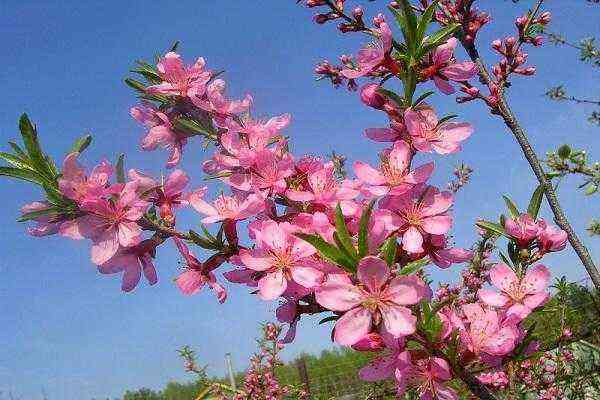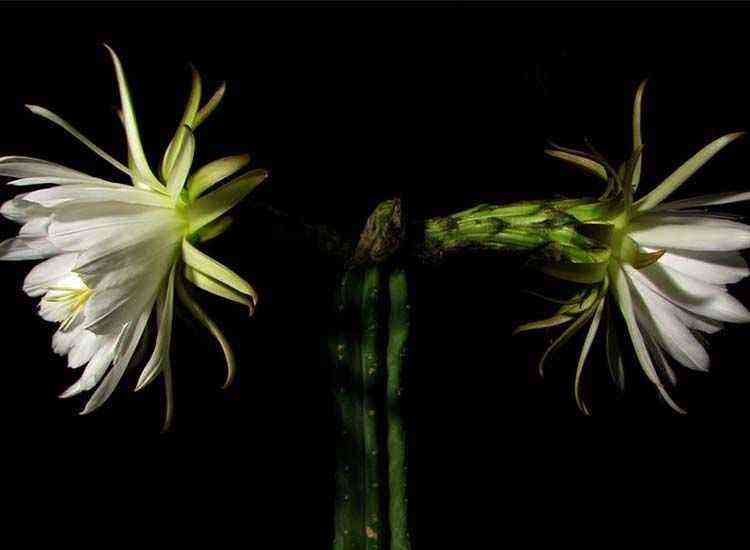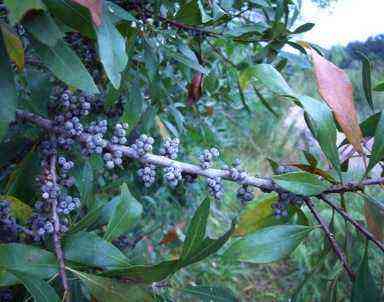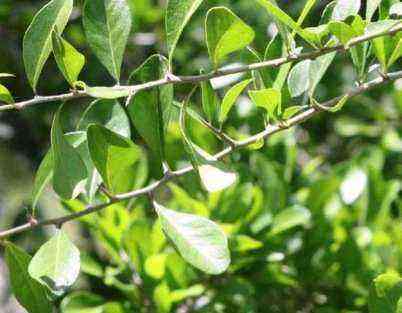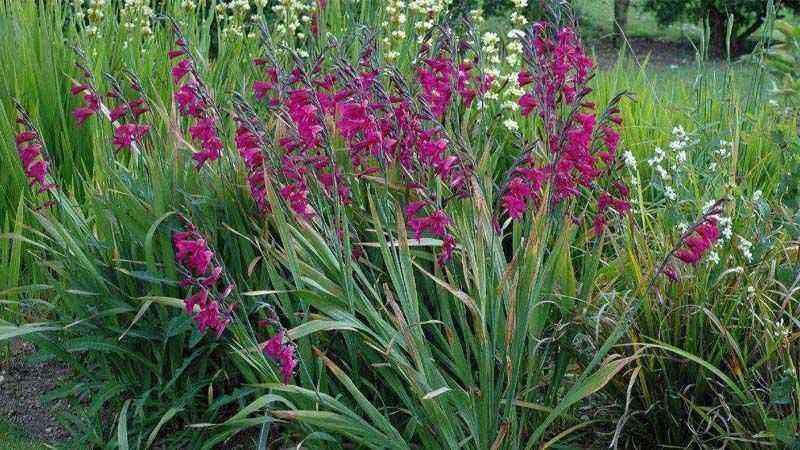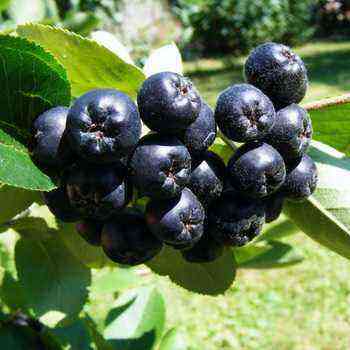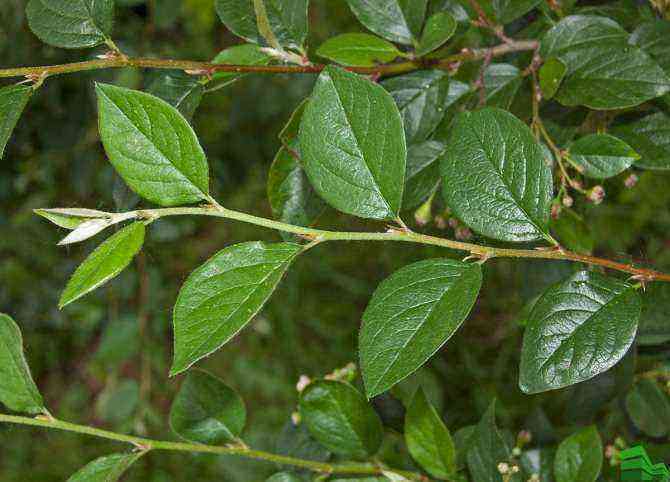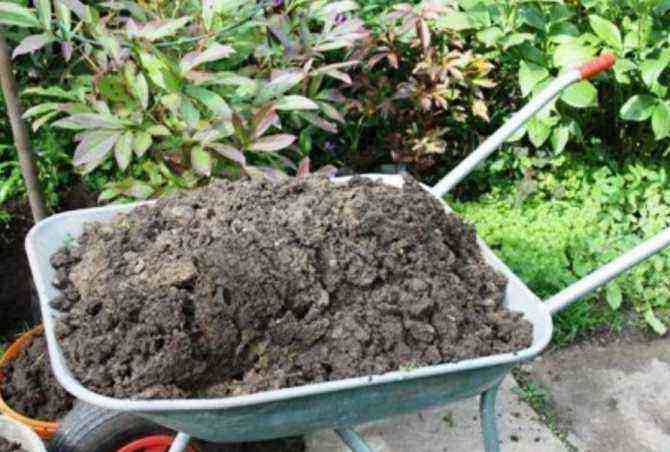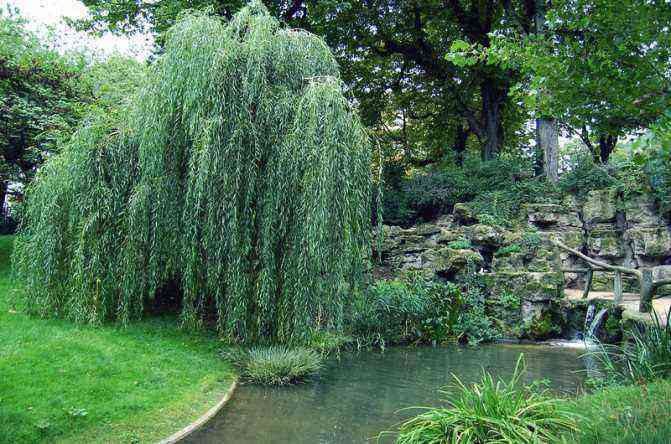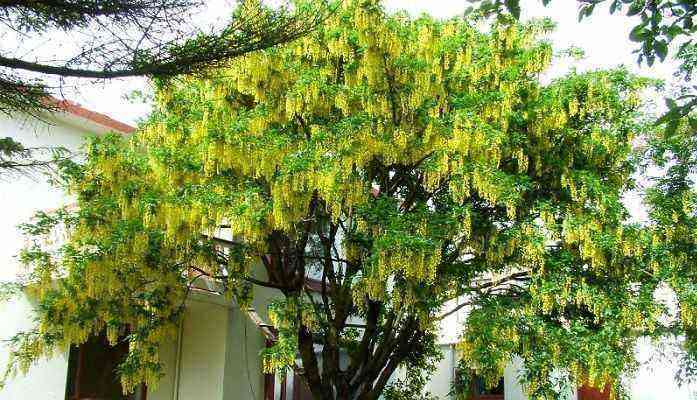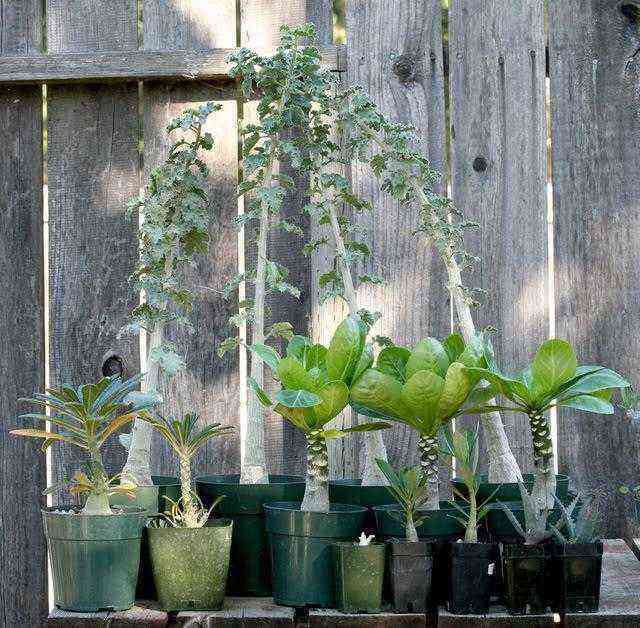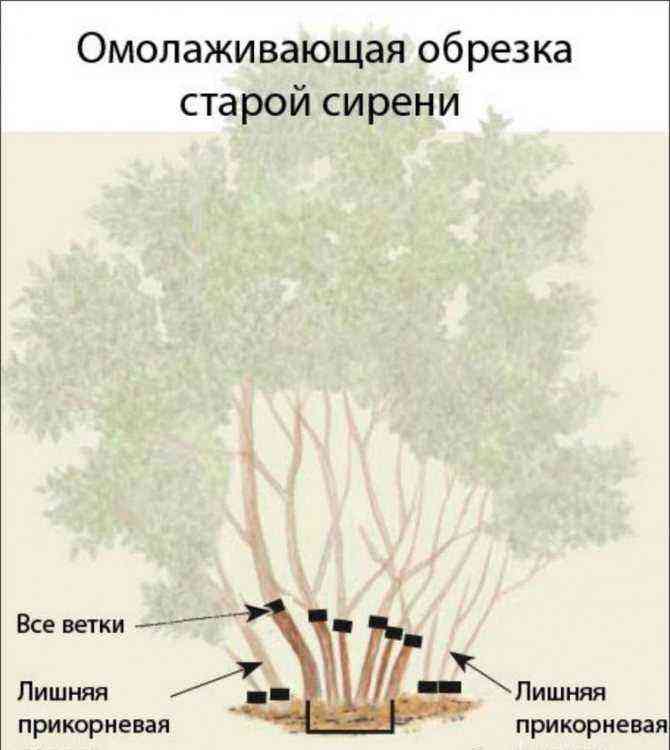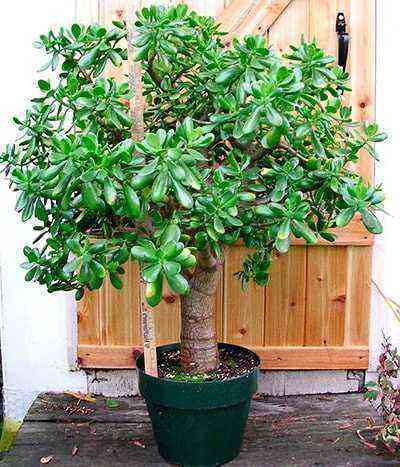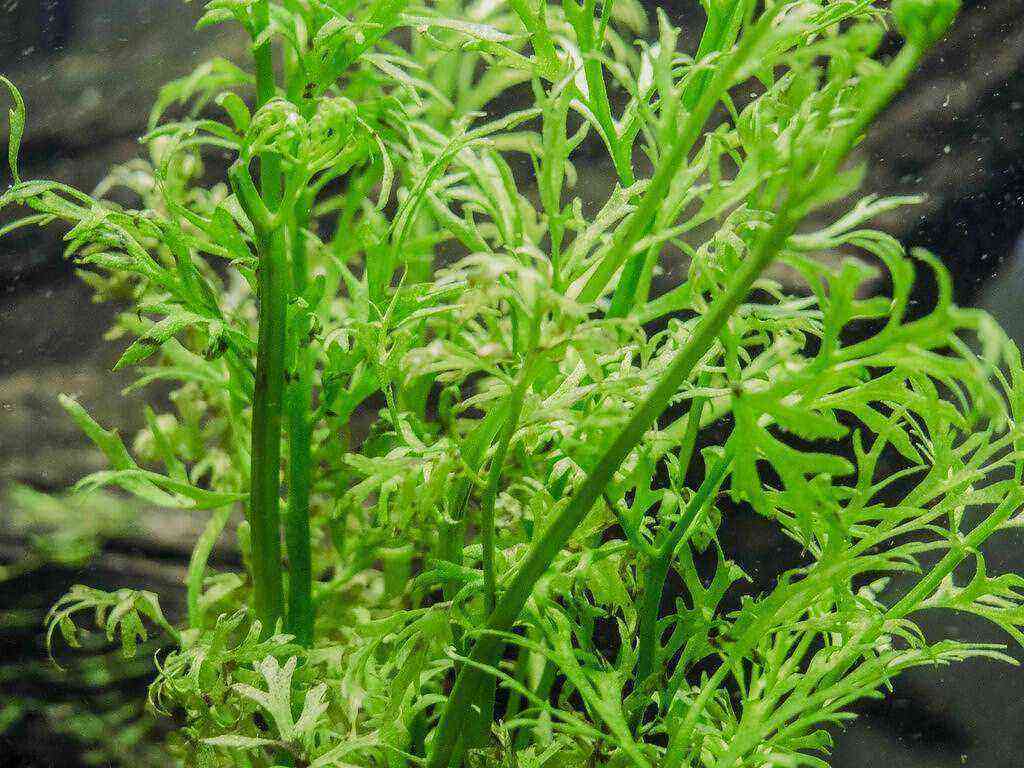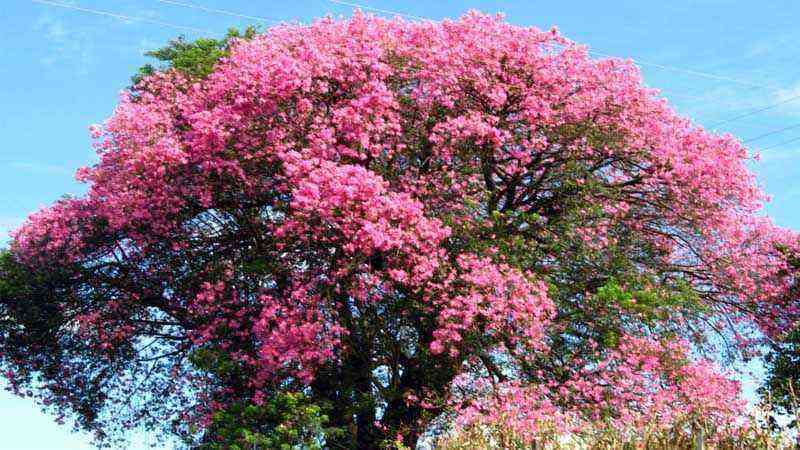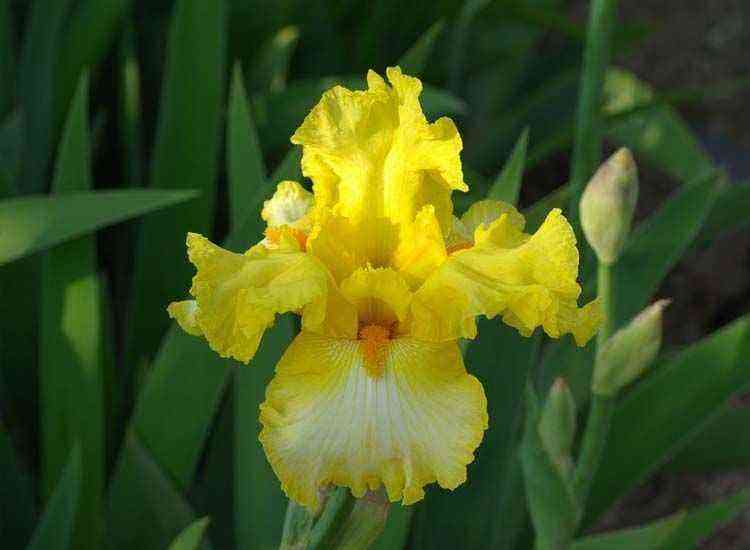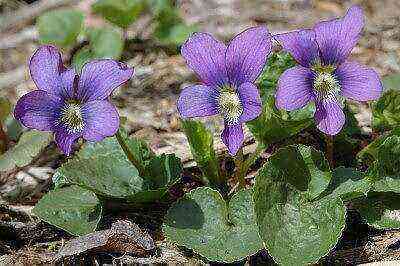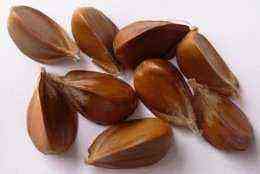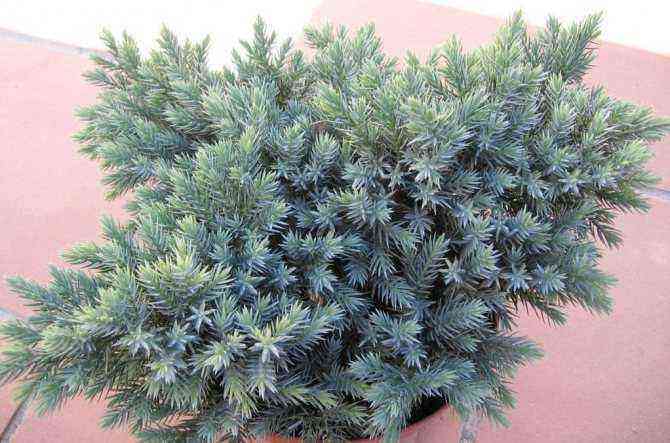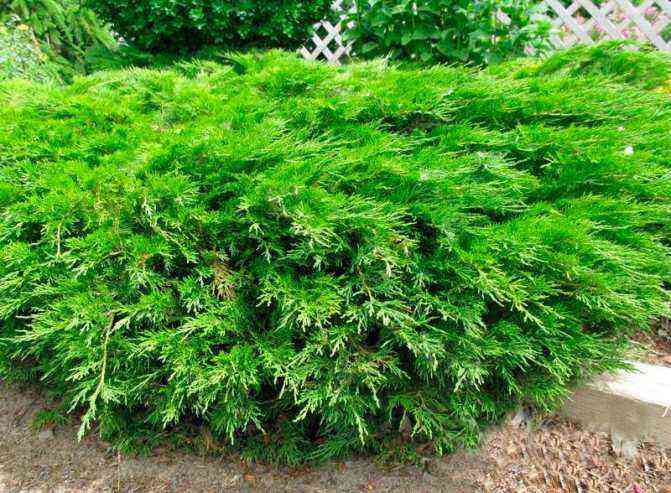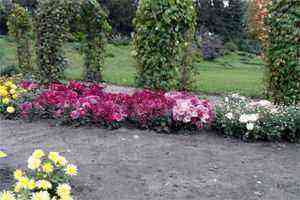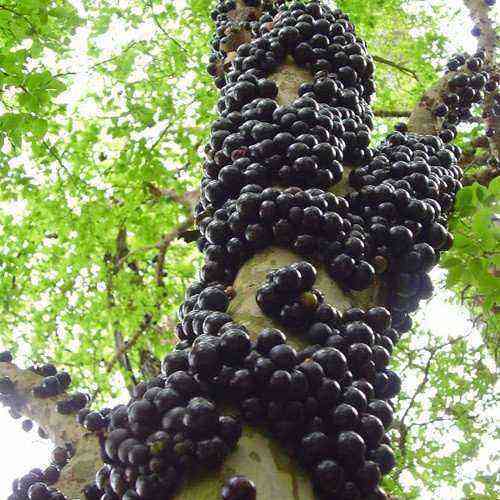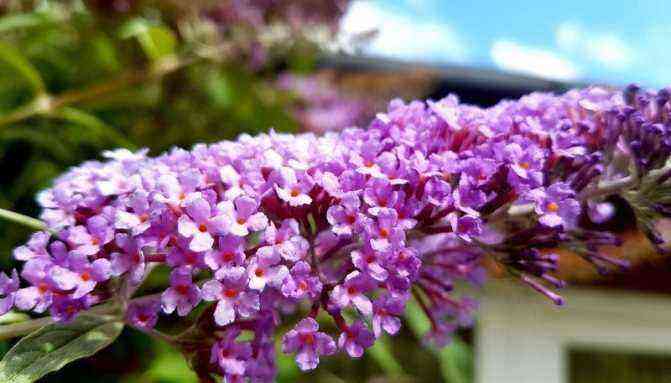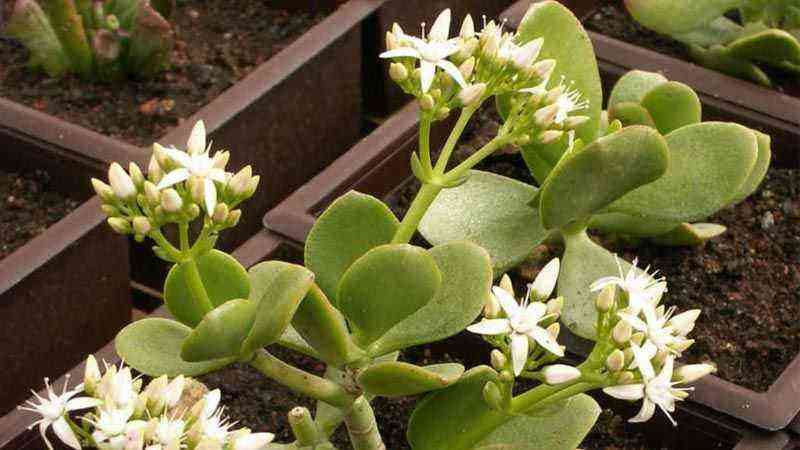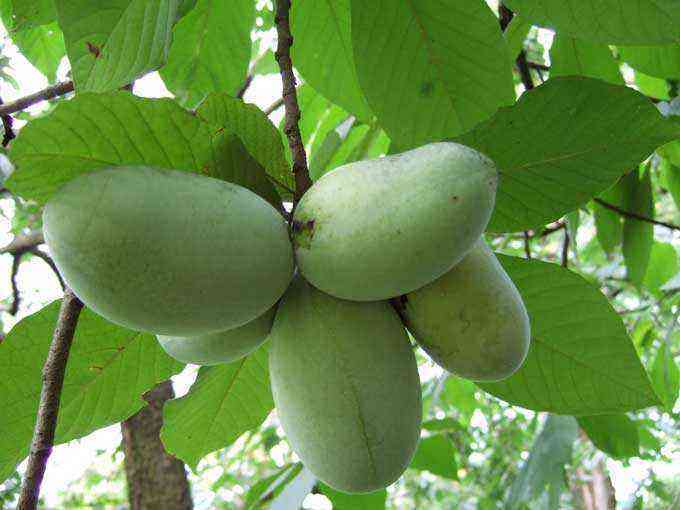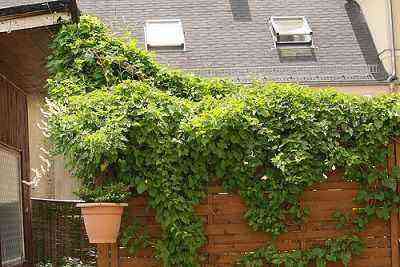Indoor conifers look very elegant, perfectly decorate the interior, purify the air in the apartment, and in winter they can act as a Christmas tree. Let’s see what kind of conifers can be successfully grown at home.
Most conifers are inhabitants of the temperate and subtropical zones, so for many of them the climate of our gardens is more suitable than the climate of living quarters. Still, some species do well in a room or conservatory.
Araucaria varifolia, or Norfolk pine
Under natural conditions, this tree, reaching 60 m in height, with flaky brown bark and horizontal whorled branches. Its soft subulate needles are tetrahedral, slightly curved upward, up to 2 cm long. The plant tolerates room temperature well, but during wintering it needs coolness (air temperature is not higher than 16 ° C).
Small seedlings of this attractive tree can be used in a vegetable terrarium (florarium), young plants can be used to decorate the windowsill, and adult specimens will look great in a composition on the floor of your room or in a large hall.
Araucaria prefers bright lighting or partial shade, away from direct sunlight. In warm weather, it can be taken out into the open air (on a balcony or in a well-ventilated room). Watering should be plentiful – from spring to autumn and moderate – in winter. The soil should not be allowed to dry out.
It is recommended to spray the crown from time to time, especially on hot days in a room with central heating. Transplant – every three years in the spring in a mixture of leafy earth, peat and sand.
Rosemary
Personally, I have been using rosemary as a New Year tree for several years now. In general, I love practical things and even treat indoor plants with a certain degree of practicality. And rosemary is a great example of how a green house pet can bring not only delight to the eyes, but also huge utilitarian benefits as an excellent seasoning, and even for medicinal purposes.
The difficulty in growing rosemary is that in winter it simply needs coolness, and in an apartment it is quite difficult to create such a microclimate. If you have an insulated balcony or loggia, then it is there that in winter there is a place for this plant. If you don’t have one, choose the coolest windowsill for your rosemary. In summer, the spice feels great on the southern window. Rosemary loves moderate watering and is not at all picky about feeding.
All these plants will perfectly cope with the role of the New Year’s tree during the holidays, and the rest of the time they will simply delight with their living beauty.
You can find this, as well as many other useful articles on my channel in Yandex Zen – My house in the garden
Did you like the article? Tell your friends about it
РќСЂР ° витсџ
Large-fruited cypress Goldcrest
This beautiful plant with golden needles is especially popular among flower growers. Cypress prefers bright, diffused sunlight, does not like frequent and abrupt changes in growing conditions, so try to move and rotate it as little as possible.
With the onset of warmth (10-14 ° C), it is advisable to settle the cypress in the open air. With the onset of autumn cold weather, the plant is brought into the house and kept at a temperature of 8-10 ° C, away from central heating devices. If you don’t have a cool room in your home, spray your plants with warm water twice a day.
Watering should be abundant from spring to autumn, moderate in winter. Top dressing is carried out from spring to autumn with fertilizer for conifers in a half concentration.
Cypress does not require frequent replanting (once every three years), however, it must be done very carefully, trying not to damage the roots of the plant. For transplanting, use a compost made from a mixture of peat, sand, foliage and coniferous litter.
With insufficient lighting, the cypress stretches and loses its shape, and with an excess of direct sunlight, the needles turn yellow and crumble.
Coniferous plant transplant
- From a small shipping container, a tree bought in a store is transplanted into a ceramic, plastic or clay pot with a diameter of no more than 10-15 cm, with drainage holes;
- These trees are hard to tolerate “resettlement”, so it is done once every 2-3 years. The transplant of indoor conifers is carried out in such a way that the earthen ball is not disturbed and the roots are not damaged;
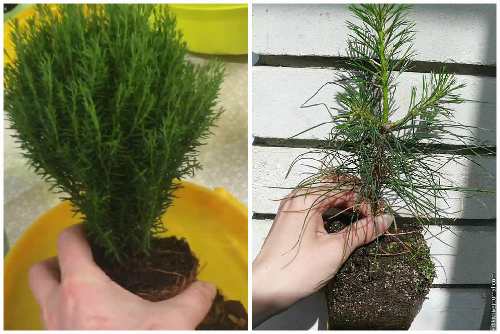

- Drainage from expanded clay is placed in the pot, activated or charcoal is added for disinfection purposes, a little substrate is added. The “green friend” is carefully removed from the container along with the ground, preventing loose soil from shattering. The earthen ball is held with one hand, the new substrate is poured with the other hand;
- The specimen is planted at the same depth as before.
Conifers for an apartment are very beautiful and aesthetically pleasing. Thanks to them, fresh air will always be present in the home. Despite the fact that the plants require careful maintenance, your efforts will be well worth it.
Japanese cryptomeria, or Japanese cedar
Indoor Japanese cryptomeria is a coniferous tree with a height of 1-2 m, with a compact crown of various shapes and a cylindrical trunk covered with brownish-red bark. Thin and graceful twigs of the plant are strewn with light green needles, which take on a yellowish tint in winter. Small bumps of cryptomeria (up to 3 cm in diameter) remain on the tree for a long time even after the seeds have spilled out and give it a special decorative effect.
For spacious rooms and offices, the Japanese Elegans form of cryptomeria is best suited. In autumn, the needles of this tree turn reddish or bronze. And in an apartment it is better to grow the Compacta form, which is distinguished by a pyramidal crown and relatively small size.
Caring for cryptomeria is no more difficult than for any other indoor plant, however, it requires adherence to some rules.
- Cryptomeria does not tolerate direct sunlight, it is quite shade-tolerant, but it grows better in diffused lighting, so in winter it should be placed closer to the window.
- 1-2 times a day you need to spray the crown of the plant, otherwise the lack of moisture will manifest itself as yellowing and shedding of the needles. Water the tree often and little by little, do it with settled and heated to 20-25 ° C water. In summer, watering is done daily, in winter – as needed. At the same time, the soil should not be allowed to dry out, but even worse if the water stagnates, the roots will immediately begin to rot and the tree will die.
- Cryptomeria must be well drained. A layer of expanded clay or small pebbles with the addition of charcoal is poured onto the bottom of the pot.
- In winter, the plant needs to lower the temperature to 6-12 ° C. At this time, the tree requires increased attention. In addition, cryptomeria does not like stagnant air, so it is necessary to ventilate the room.
- A young plant is transplanted (by the transfer method) annually in early spring (in March-April) during a period of active growth. Cryptomeria over 5 years old is transplanted every 3-4 years, and every spring the topsoil is simply removed and fresh soil is added.
A pot that is too large in volume and intensive feeding can provoke an increased growth of cryptomeria.
How to care for conifers in winter
- A green pet feels most comfortable on a cold window from the northeast or north side, on a glazed veranda or loggia. The temperature level should not be below zero, and freezing of the soil should not be allowed;
- These representatives of the flora are very resistant to low temperatures, but in a small pot, freezing of the roots should be avoided, because they can immediately die;
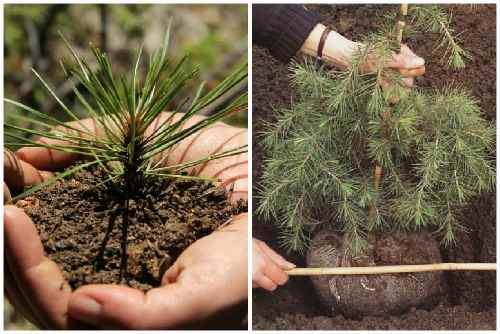
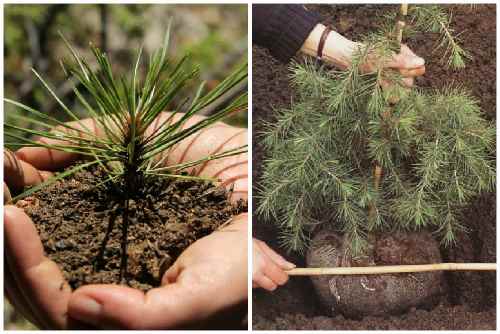
- In winter, the trees are in a calm state, therefore, they do not require fertilizing with growth stimulants. They begin to be held from the beginning of March. In the summer, you can take the “green inhabitant” with you to the dacha and plant it right in a pot in the open ground in a shaded corner so that the tree grows in cool soil, than it will “steam” in the hot air;
- Cover the substrate with a cloth to keep earthworms and insects out of the pot. At the beginning of September, he is dug up, washed and transferred to an apartment.
Deodar
This evergreen plant loves bright, diffused sunlight. In a warm room in winter, you can keep it for about a week, after which it is necessary to provide cooler conditions (from 0 to 10 ° C). With the onset of spring, before the first frost, it is recommended to take the cedar out into the open air, in a sunny corner.
It is necessary to periodically spray and water the plant regularly. The transplant does not have a very good effect on the cedar, so immediately choose a spacious tub for it and transplant only when it grows too large for your apartment.
Cypress
Cypress is very often used to decorate New Year’s and holiday celebrations. The tree has a neat pyramid-like shape and looks like mini Christmas trees. In addition, these trees will be a wonderful gift for the New Year, it can be presented to the owners for a holiday.
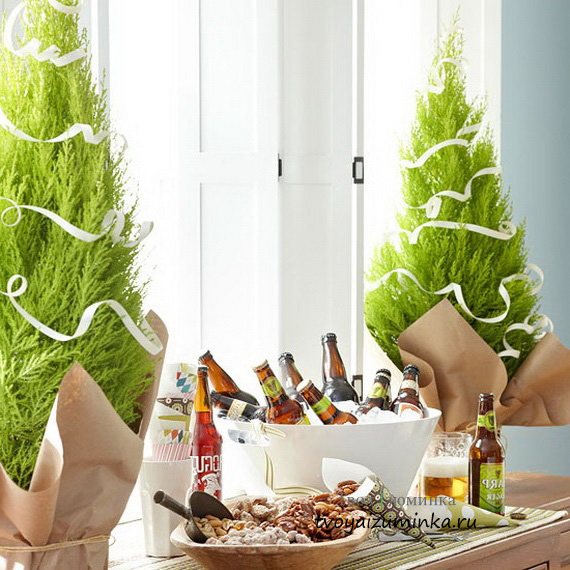
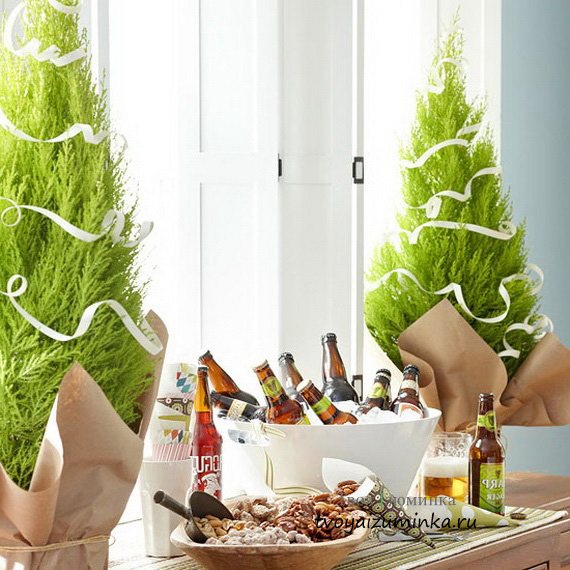
If you have this wonderful green plant, then you need to know how to properly care for it.
Features of care and watering. Homemade cypress loves coolness (12-15 ° C) and does not tolerate bright light. Therefore, if the windows of your apartment are facing the sunny side, it is better to refrain from buying such a “Christmas tree”: with singed ends, it will have a pale appearance. Watering should be moderate, the main thing is to prevent the soil from drying out. Therefore, watering once a week will be the best solution for this tree. But you can spray the cypress at least every day.
Asparagus pinnate
Asparagus pinnate or putanka often lives in many houses and pleases the owners with its lush, green, coniferous crown.
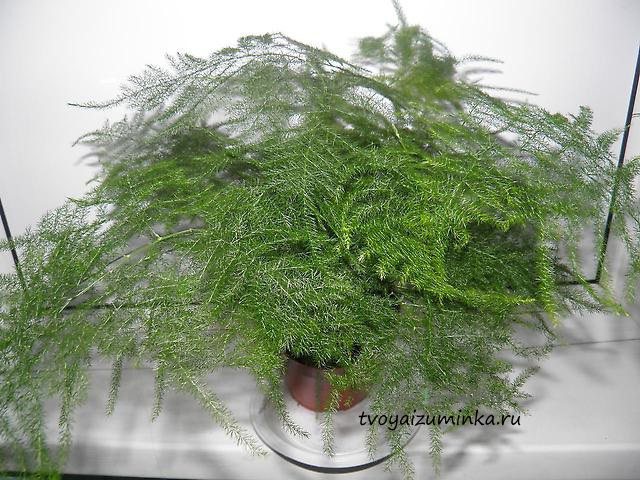

However, if this plant is slightly embellished, then it will also take its rightful place among the New Year’s decoration of the room.

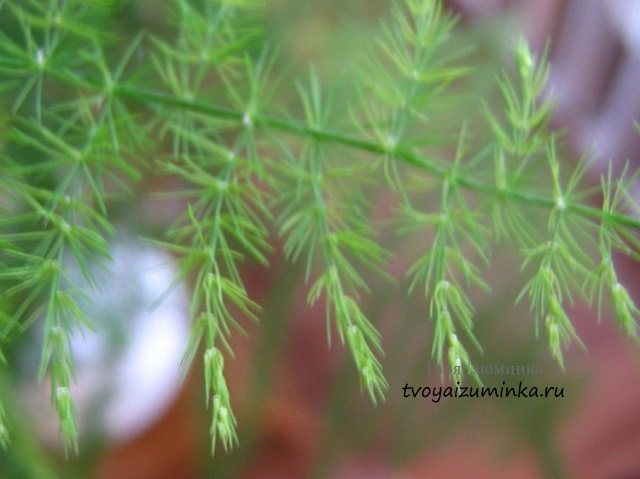
Features of care and watering. The best place for a flower is the east and west windows. Asparagus is demanding on temperature: in summer – no higher than 20-22 ° С, in winter – about 15 ° С. If the room is warmer, daily spraying will save. Loves moisture: in the summer water often and abundantly, in the winter – at least once a week.
How and when to feed. From spring to fall, feed with liquid flower fertilizer twice a month.
Diseases and problems
The consequences of violating the rules of plant care leads to possible symptoms.
- The plant grows poorly – with an excess of calcium. The tree must be transplanted into suitable soil, watered with softened water, and the fertilizer changed.
- Very thin new twigs – appear when there is a lack of nutrients. Increase the amount of dressings, change the land.
- Curvature of the trunk – uneven lighting. Turn the container with the plant 90 degrees every week.
- Shoots turn yellow and dry – with insufficient air humidity. Increase the number of sprays, place the pot in a pan with water.
- The needles dry and fall off – the reason can be both low air humidity and insufficient watering.
vermin
On araucaria extremely rarely attack plant pests. But still there are lovers of this homemade tree: aphids, pine loach, motley moth.
aphid settles on needles, sucking juice from it. To prevent its appearance and fight, mineral oil, decis and fastak are used, which are sprayed on the tree.
Speckled moth gnaws through the passages in the needles. In this case, the leaves turn brown, the upper parts of the shoots die. To combat it, agents containing pyrethroids are used.
Pine loach frequent visitor of decorative conifers. The damage is caused by the larva, which is introduced into young shoots and buds, as a result of which the shoots bend and the buds dry out. If the lesions are small, it is enough to remove and burn the damaged parts; in case of extensive lesions, they are treated with Fastak.
And for the most curious, we suggest that you familiarize yourself with the video guide on caring for araucaria
Source: farmer-online.com
Transplant and feeding
Unfortunately, it is almost impossible to achieve one hundred percent survival rate of conifers during transplantation (especially for ornamental and purchased plants).
In our climate, the end of April – beginning of May is considered the optimal time for transplanting conifers. But as practice shows, you can transplant at any other time of the year, if there is such a need.
Transplanting growing conifers “throughout the program” is a very serious and traumatic procedure: It involves cleansing the root system of old soil mixture, removing diseased, dried or rotten roots, processing the cuts (for this, crushed charcoal is used).
ON THE PICTURE: A complete transplant of a coniferous plant is rarely done, the transshipment method is most often used
It is not necessary to transplant the plant into a larger pot (if there are rotten roots, you can even take a smaller pot). It depends on the health of the plant itself, the state of the root system, as well as on the desired result – whether you want to grow the ephedra faster or, conversely, restrain its growth.
Before replanting the plant, drainage is poured into the bottom of the pot (for example, washed sand + a few pieces of charcoal). A hill of soil is poured over the drainage, along which the roots are straightened, after which the pot is filled with earth. If large specimens are transplanted, the earth is poured not in a slide, but in a simple layer, since their roots, most often, are lignified, tough, and it is not always possible to spread them out.
Important! During transplantation, carefully monitor the position of the root collar – deepening it into the substrate is categorically contraindicated for conifers!
After transplanting, the coniferous plant is shaded from the sun for 1-2 weeks and kept in conditions of high humidity (regular watering and spraying is required).
However, a complete transplant of conifers at home is rarely done – the risk of damaging the root system is very high. As a rule, conifers are simply rolled over or transplanted in a sparing mode – while the earthen lump is not destroyed artificially, only the soil that is shaken off and crumbles by itself is removed.

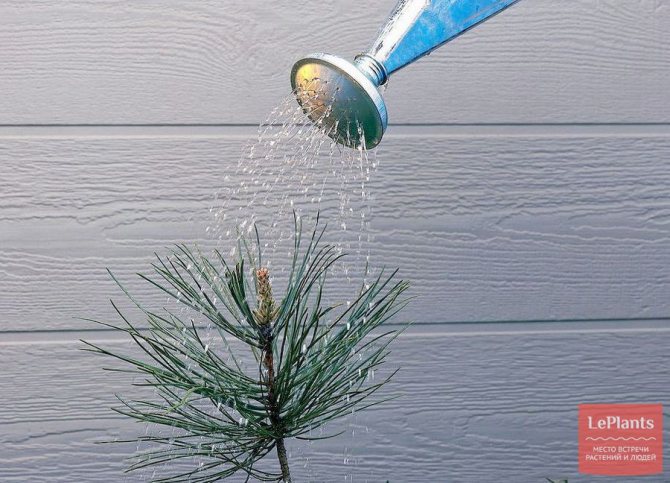
ON THE PHOTO: Regular watering and spraying the crown with warm water is a prerequisite for keeping conifers
Abundant fertilization is not required for conifers. It is enough to apply a weak mineral fertilizer or special fertilizer for conifers a couple of times during the summer.
